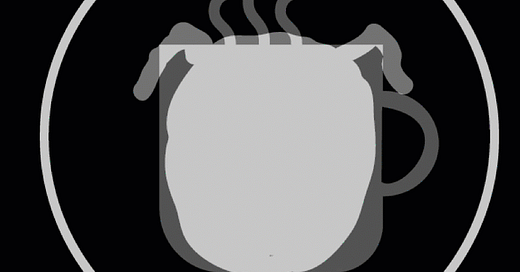YOUR READING ASSIGNMENTS
Limited access to this copyrighted material is by explicit permission of the author and only available for this free cost during the active running of this course in 2024. The final version will be available in book format shortly after the conclusion of this course.
Class Agenda Week 10: “Violence, Control, and the Shaping of the Dream”
A welcoming and serious discussion based on JB Minton’s analysis of trauma, power, and the forces shaping Dale Cooper’s dream in Twin Peaks: The Return Watch Twin Peaks: The Return Part Ten: “Laura is the One.”
Part Ten is about power—who has it, who abuses it, and who suffers under it. JB Minton’s analysis suggests this episode showcases the slow but inevitable collision of good and evil, where love and violence battle for dominance in The Return.
Key Themes for Discussion:
Violence as a System – How brutality sustains itself in Twin Peaks and beyond.
Communication Breakdowns – Why characters struggle to speak or be heard.
The Dream as a Moral Battleground – The forces trying to wake Cooper up.
Redemption vs. Corruption – Characters moving toward or away from grace.
Sound as a Signal – How certain noises (humming, music) guide the dream.
Scene-by-Scene Breakdown & Discussion Questions
1. Richard Horne’s Terror Reigns: Violence as a Self-Sustaining System
📍 Key Idea: Richard embodies unchecked brutality, terrorizing Twin Peaks.
Richard attacks Miriam Sullivan to silence her testimony about the hit-and-run.
Deputy Chad intercepts her letter, delaying justice.
Meanwhile, Steven rages at Becky, trapping her in an abusive spiral.
Carl Rodd observes the violence and mutters, "It’s a fucking nightmare."
Discussion Questions:
Minton argues that Twin Peaks is "a town infected with trauma." Is Richard just another symptom?
Why does Miriam choose such a slow method of communication (a letter) rather than calling? What does this say about the more significant theme of being trapped?
What do Carl Rodd’s observations suggest about his role in the story?
🔹 Challenging Statement: “Violence in Twin Peaks is not an anomaly—it is a cycle that feeds itself.”
2. The Mitchum Brothers & Candie: When Perception Becomes Reality
📍 Key Idea: Candie’s misplaced focus mirrors how reality distorts in the dream.
Candie obsessively chases a fly, accidentally smashing Rodney with a remote.
Her hysterical breakdown lasts far longer than the moment, showing how reality warps around perception.
Later, the Mitchums see Dougie on the news, recognizing him as "Mr. Jackpots" and unknowingly entering the battle for Cooper’s fate.
Discussion Questions:
Minton compares Candie to an unwitting agent of chaos. Is she a fool, or is she sensing something deeper?
Why does Candie’s guilt over harming Rodney feel so exaggerated? Does this suggest that even minor violence has profound consequences?
How does the Mitchums’ recognition of Dougie shift the dream’s trajectory?
🔹 Challenging Statement: “In a dream, even small actions can have massive consequences.”
3. Janey-E and Dougie: Lust, Love, and Awakening
📍 Key Idea: Janey-E’s shift from frustration to devotion mirrors Cooper’s reawakening.
After seeing Dougie’s physique, Janey-E is suddenly overcome with desire.
Their love scene is one of The Return's only moments of true joy.
Minton suggests this moment awakens something in Cooper—he is no longer just a passive observer in his own life.
Discussion Questions:
Is Janey-E falling in love with Dougie or sensing Cooper’s presence?
Does this moment of joy suggest a shift in the dream, or is it another way to keep Cooper trapped?
Minton calls this scene "a visual definition of marital bliss." Is this genuine love or an illusion?
🔹 Challenging Statement: “Love in The Return is both a lifeline and a prison.”
4. The Horne Family Meltdown: Generational Trauma Unleashed
📍 Key Idea: Richard’s violence is the culmination of years of Horne family dysfunction.
Richard robs and brutalizes his grandmother, Sylvia Horne, while Johnny watches, bound and unable to help.
Minton argues this is a direct consequence of Ben Horne’s legacy of corruption and abuse.
The teddy bear’s eerie repetition—“Hello Johnny, how are you today?”—frames this as another moment of helplessness and horror.
Discussion Questions:
Does Richard’s behavior suggest pure evil, or is he a product of his environment?
Why is Johnny Horne tied up, forced to witness, but unable to intervene?
Does Ben Horne’s exhausted reaction suggest guilt, detachment, or something else?
🔹 Challenging Statement: “Richard Horne is not just a villain—he is the physical embodiment of Twin Peaks’ past sins.”
5. Gordon’s Vision: Laura’s Pain as a Cosmic Warning
📍 Key Idea: The dream is collapsing, and Gordon is one of the few who can sense it.
Gordon sees a vision of Laura Palmer’s torment from Fire Walk With Me before Albert enters.
This suggests Laura is still the central figure of the mystery, and her suffering is somehow tied to Cooper’s fate.
Minton argues that this confirms The Return is more about Cooper’s reaction to Laura’s pain than Laura herself.
Discussion Questions:
Why is Gordon shown this vision now? Is this a warning or a reminder?
Does Laura exist in the present, or is she just a memory Cooper cannot escape?
How does Gordon’s vision connect to the overarching theme of “Who is the dreamer?”
🔹 Challenging Statement: “Laura Palmer is no longer just a person—she is a force within Cooper’s subconscious.”
6. The Log Lady’s Prophecy: A Dark Future Looms
📍 Key Idea: Margaret warns of an impending collapse—and ties it directly to Laura.
Margaret tells Hawk:
“Electricity is humming, but the glow is dying. What will be in the darkness that remains?”
“The Truman brothers are true men.”
“Laura is the one.”
Minton interprets this as a final warning that the dream cannot hold much longer.
Discussion Questions:
Why does Margaret frame Laura as “the one”? What does that mean?
Is the darkness that remains a metaphor for Cooper’s soul?
Why does she emphasize the Truman brothers? Are they guiding forces for Cooper?
🔹 Challenging Statement: “Margaret is not just a seer—she is trying to guide Cooper out of the dream.”
Final Reflection: Is the Dream Cracking Open?
Are we seeing the first signs that the dream world is unraveling?
Minton suggests that love, violence, and memory shape this dream. Which will win?
🔹 Final Thought Exercise:
If you were trapped in Cooper’s dream, what would be your signal that something was wrong?
Next class…"Part Eleven”
Support This Community With A Paid Subscription and Share Your Thoughts On Twin Peaks With Other Good People. Every Comment Gets a Response.
AI DISCLAIMER: This podcast was produced using Google’s NotebookLM, but I put a lot of work into the prompting, and I think it has accomplished a great job of the goal I asked it to perform.




![[Twin Peaks] Chapter 18 - Hour Ten "Laura Is The One"](https://substackcdn.com/image/fetch/$s_!5rlE!,w_140,h_140,c_fill,f_auto,q_auto:good,fl_progressive:steep,g_auto/https%3A%2F%2Fbucketeer-e05bbc84-baa3-437e-9518-adb32be77984.s3.amazonaws.com%2Fpublic%2Fimages%2F9bde4da9-b91c-429b-b19f-d962b3ea94ee_4280x1254.png)










Share this post